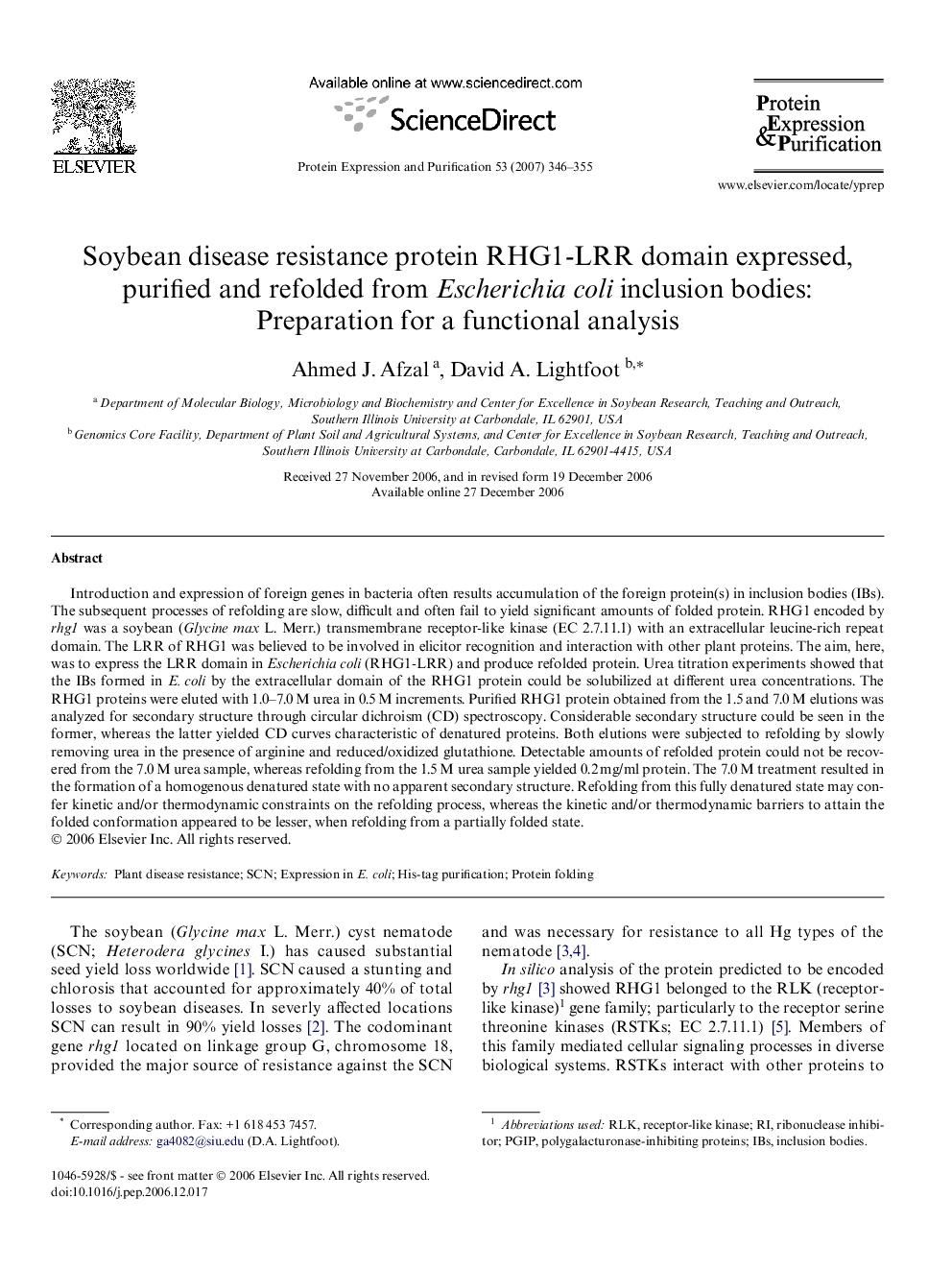| کد مقاله | کد نشریه | سال انتشار | مقاله انگلیسی | نسخه تمام متن |
|---|---|---|---|---|
| 10843477 | 1069260 | 2007 | 10 صفحه PDF | دانلود رایگان |
عنوان انگلیسی مقاله ISI
Soybean disease resistance protein RHG1-LRR domain expressed, purified and refolded from Escherichia coli inclusion bodies: Preparation for a functional analysis
دانلود مقاله + سفارش ترجمه
دانلود مقاله ISI انگلیسی
رایگان برای ایرانیان
کلمات کلیدی
موضوعات مرتبط
علوم زیستی و بیوفناوری
بیوشیمی، ژنتیک و زیست شناسی مولکولی
زیست شیمی
پیش نمایش صفحه اول مقاله

چکیده انگلیسی
Introduction and expression of foreign genes in bacteria often results accumulation of the foreign protein(s) in inclusion bodies (IBs). The subsequent processes of refolding are slow, difficult and often fail to yield significant amounts of folded protein. RHG1 encoded by rhg1 was a soybean (Glycine max L. Merr.) transmembrane receptor-like kinase (EC 2.7.11.1) with an extracellular leucine-rich repeat domain. The LRR of RHG1 was believed to be involved in elicitor recognition and interaction with other plant proteins. The aim, here, was to express the LRR domain in Escherichia coli (RHG1-LRR) and produce refolded protein. Urea titration experiments showed that the IBs formed in E. coli by the extracellular domain of the RHG1 protein could be solubilized at different urea concentrations. The RHG1 proteins were eluted with 1.0-7.0Â M urea in 0.5Â M increments. Purified RHG1 protein obtained from the 1.5 and 7.0Â M elutions was analyzed for secondary structure through circular dichroism (CD) spectroscopy. Considerable secondary structure could be seen in the former, whereas the latter yielded CD curves characteristic of denatured proteins. Both elutions were subjected to refolding by slowly removing urea in the presence of arginine and reduced/oxidized glutathione. Detectable amounts of refolded protein could not be recovered from the 7.0Â M urea sample, whereas refolding from the 1.5Â M urea sample yielded 0.2Â mg/ml protein. The 7.0Â M treatment resulted in the formation of a homogenous denatured state with no apparent secondary structure. Refolding from this fully denatured state may confer kinetic and/or thermodynamic constraints on the refolding process, whereas the kinetic and/or thermodynamic barriers to attain the folded conformation appeared to be lesser, when refolding from a partially folded state.
ناشر
Database: Elsevier - ScienceDirect (ساینس دایرکت)
Journal: Protein Expression and Purification - Volume 53, Issue 2, June 2007, Pages 346-355
Journal: Protein Expression and Purification - Volume 53, Issue 2, June 2007, Pages 346-355
نویسندگان
Ahmed J. Afzal, David A. Lightfoot,